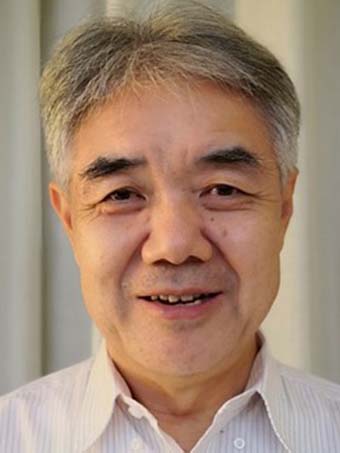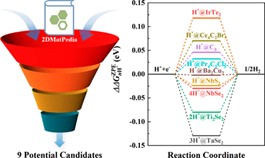
Email: phyfyp@nus.edu.sg
Current Research
Prof. Feng’s research area is omputational materials physics, with a focus on understanding fundamental properties of various materials and designing new materials for advanced technologies, based on ab initio electronic structure calculations and materials genomic approach.
- Two-dimensional materials database. Genomic or data-driven materials research has emerged as a new paradigm of materials discovery. By integrating experiments, computation, data mining and informatics, genomic approach is expected to significantly speed up the development and deployment of new materials at a reduced cost. We have been developing a database for two-dimensional (2D) materials, 2D Materials Encyclopedia (2DMatPedia). The database currently contains structures and properties of thousands of 2D materials which grows rapidly. 2DMatPedia has beccome a platform for material screening, data mining, data analysis and artificial intelligence applications. On-going projects include: (i) further expansion of the 2D materials collection by both top-down and bottom-up approaches; (ii) collection of 2D materials data from literature; (iii) analysing 2D materials data to identify trends and descriptors; (iv) adapting machine learning methods to design and prediction of 2D materials; (v) applications of 2D materials, such as development of sensors for Internet of Things.
- Quantum materials. New materials are crucial for development of new technologies which are urgently needed in order to address challenges in energy, security, healthcare, etc. Quantum materials offer breakthrough opportunities for energy-efficient devices. Computation has been an important approach in studies of materials for advanced technologies and plays an increasing role in design of new functional materials. First principles methods based on density functional theory, in particular, have unprecedented predicting power, and is the state-of-the-art approach for investigating properties of new materials and for designing new functional materials. Using first-principles method as a tool, we investigate physical phenomena and properties of various quantum materials and predict new quantum materials. Some systems of current interest include spintronic and magnetic materials, topological materials, charge density waves, materials for memory and data storage, low dimensional materials and their heterostructures, etc. Most of our studies are carried out in close collaboration with experimentalists.

High-throughput identifications of exfoliable two-dimensional materials with active basal planes for hydrogen evolution. Nine conducting, synthesizable, and exfoliable 2D catalysts with active basal planes (C8, NbS2, NbSe2, TaSe2, IrTe2, Ti2Se2, Ba2Cu2, Pr4C2Cl5, and Ce4C2Br5) were identified to have an HER performance comparable to that of Pt-based catalysts. Figure take from ACS Energy Letters 5 (7), 2313 (2020). Copyright: ACS Publication.
Selected Publications
- Zishen Wang, Jun Zhou, Kian Ping Loh, and Yuan Ping Feng, “Controllable phase transitions between multiple charge density wave in monolayer 1T-VSe2 via doping and strain”, Applied Physics Letters, 119 (16), 163101 (2021).
- Xiaoyang Ma, Jun Zhou, Tong Yang, Dechun Li, and Yuan Ping Feng, “Phase diagram and superlattice structures of monolayer phosphorus carbide (PxC1−x)”, Physical Review Materials 5, 024005 (2021).
- Jing-Yang You, Bo Gu, Gang Su, and Yuan Ping Feng, “Two-dimensional topological superconductivity in van der Waals layered material”, Physical Review B 103, 104503 (2021).
- Weilong Kong, Tong Yang, Jun Zhou, Yong Zheng Luo, Tao Zhu, Jingsheng Chen, Lei Shen, Yong Jiang, Yuan Ping Feng, and Ming Yang, “Tunable Rashba spin-orbit coupling and its interplay with multiorbital effect and magnetic ordering at oxide interfaces”, Physical Review B 104 (15), 155152 (2021).
- Jun Zhou, Yuan Ping Feng, and Lei Shen, “Atomic-orbital-free intrinsic ferromagnetism in electrenes”, Physical Review B, 102 (18), 180407R (2020).
- Yang, Tong; Zhou, Jun; Song, Ting Ting; Shen, Lei; Feng, Yuan Ping; Yang, Ming, “High-Throughput Identifications of Exfoliable Two-Dimensional Materials with Active Basal Planes for Hydrogen Evolution”, ACS Energy Letters 5 (7), 2313 (2020).
- Jun Zhou, Lei Shen, Miguel Dias Costa, Kristin A. Persson, Shyue Ping Ong, Patrick Huck, Yunhao Lu, Xiaoyang Ma, Yiming Chen, Hanmei Tang & Yuan Ping Feng, “2DMatPedia, an open computational database of two-dimensional materials from top-down and bottom-up approaches”, Scientific Data, 6, 86 (2019).
- Linghu, Jiajun; Yang, Tong; Luo, Yong Zheng; Yang, Ming; Zhou, Jun; Shen, Lei; Feng, Yuan Ping, “High-throughput Computational Screening of Vertical 2D van der Waals Heterostructures for High-efficiency Excitonic Solar Cells”, ACS Applied Materials & Interfaces, 10 (38), 32142 (2018).
- Lei Xu, Ming Yang, Lei Shen, Jun Zhou, Tao Zhu, and Yuan Ping Feng, “Large valley splitting in monolayer WS2 by proximity coupling to an insulating antiferromagnetic substrate”, Physical Review B, 97 (4), 041405R, (2018).
- Yang, M.; Luo, Y. Z.; Zeng, M. G.; Shen, L.; Lu, Y. H.; Zhou, J.; Wang, S. J.; Sou, I. K. & Feng, Y. P., “Pressure induced topological phase transition in layered Bi2S3”, Phys. Chem. Chem. Phys., 19 (43), 29372 (2017).
Affiliations & Links
- APS Fellow
- IPS Fellow
- Academician of Asia Pacific Academy of Materials
